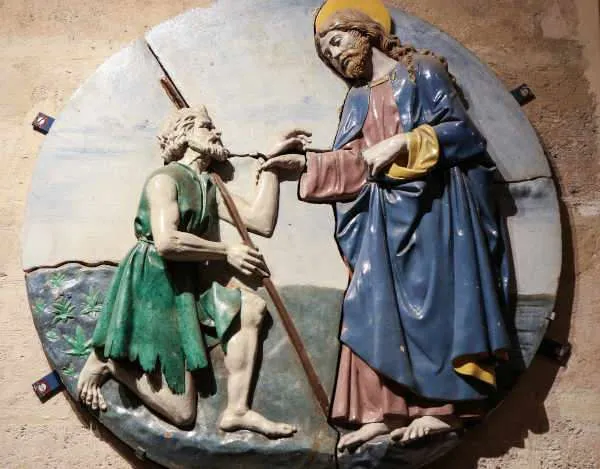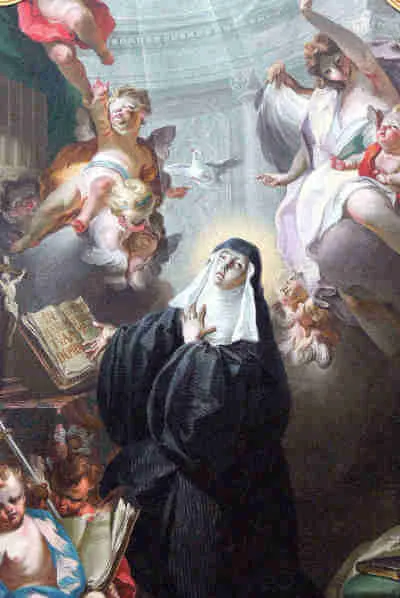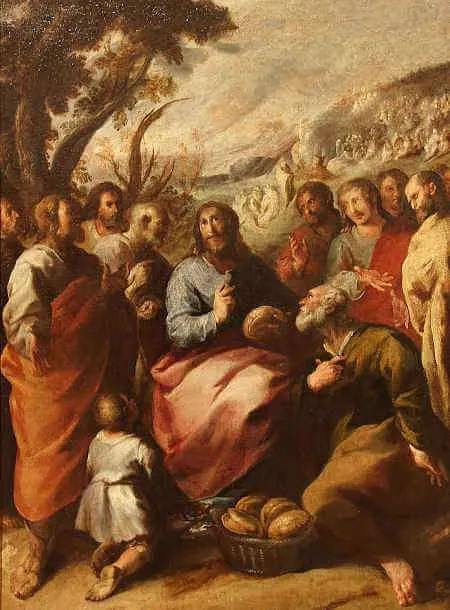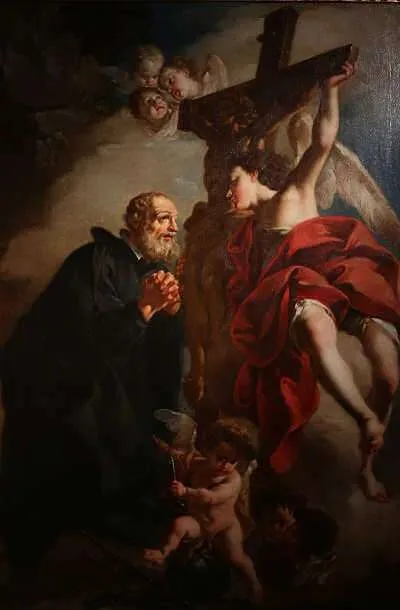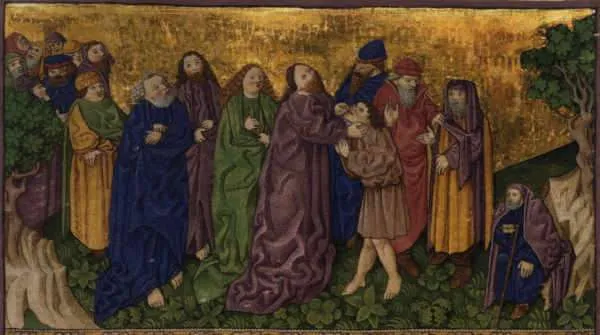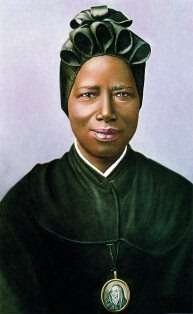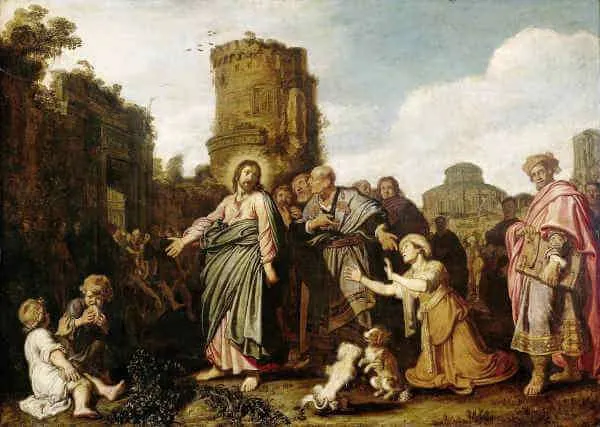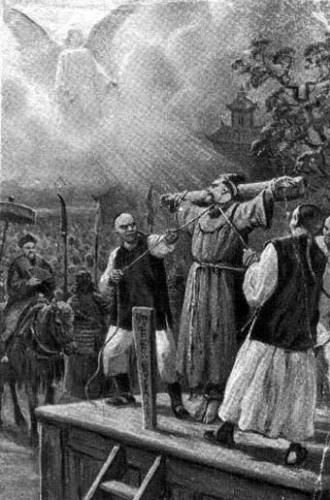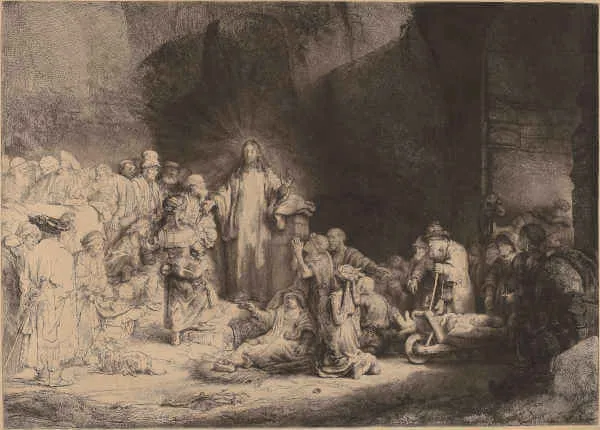Our Lady of Lourdes
Patron Saint of the sick, asthma sufferers
Bernadette Soubirous was born on January 7, 1844, into a humble and very poor family in Lourdes, France. Her father was a miller and her mother washed laundry. The eldest of nine children, Bernadette received a simple education from the Sisters of Charity and Christian Instruction, but frequent illness hindered her studies.
Growing up, she spoke the local dialect of Occitan and learned some French in her teenage years. Her family was so poor that all eleven lived together for free in a relative’s one-room basement that was formerly used as a prison or dungeon.
When Bernadette was fourteen years old, she went with her sister and a friend to gather some firewood to heat their home. Bernadette fell behind as they searched for wood near a naturally occurring rock grotto. She then heard the sound of a rushing wind but saw only a wild rose moving.
Then, from within the grotto, she saw a dazzling light and the figure of a small young lady in white with yellow roses on her feet. The other two girls saw nothing. Bernadette asked her sister not to tell anyone, but her sister later told their mother. Bernadette’s mother punished the girls for lying and forbade them to return to the grotto.
Three days later, Bernadette felt drawn to return to the grotto, so she and her two companions begged for permission from her mother who reluctantly agreed. Bernadette brought with her a bottle of holy water. When they arrived at the cave, the three girls knelt to pray the rosary. Before finishing the first decade, the young woman in white appeared. Bernadette sprinkled holy water in her direction, telling her that if she were from God she should stay; if not, she should leave. The woman smiled and stayed for the rest of the rosary and then departed.
By this time, some of the local townspeople began to hear about these encounters. Some were superstitious, thinking it was the souls of dead relatives. Others believed it was the Blessed Virgin Mary. Four days later, Bernadette returned to the cave accompanied by a few grown-ups. When the lady appeared, she spoke to Bernadette for the first time, in Occitan. The lady spoke to Bernadette in a remarkably formal and respectful manner, not the way an adult would normally speak to a poor peasant girl. She asked Bernadette if she was willing to return for the next fourteen days. Bernadette agreed.
Bernadette recounts the following about the next two weeks of visions: “I came back for a fortnight. The vision appeared every day, except one Monday and one Friday. She repeated to me several times that I was to tell the priests they were to build a chapel there, and I was to go to the fountain to wash, and that I was to pray for sinners. During this fortnight, she told me three secrets which she forbade me to tell anyone. I have been faithful until now.”
As word spread, the numbers in attendance grew to 30, 100, 350, 800, 1000, 1,500, culminating with almost 10,000. During the fortnight, the local police got involved and threatened Bernadette and her family. However, Bernadette persevered. The lady asked people to pray for sinners and to do penance.
During the ninth vision, the lady asked Bernadette to drink from a spring of water in the cave. She found only a small muddy puddle so she drank from it. This left mud on her face, which caused many of the onlookers to ridicule her, to the embarrassment of her family. Over the next two days, the little mud puddle turned into a flowing spring of clear water.
Many began to believe when a woman’s paralyzed arm was cured after bathing it in the new spring of water. Throughout the fourteen days, Bernadette continually asked the lady’s name, because the parish priest had asked her to do so. Each time, the lady only smiled.
Upon the conclusion of the fourteen days, life returned to normal for the next three weeks. However, on March 25, the Feast of the Annunciation, Bernadette was drawn once again to the grotto. This time, she repeatedly asked the lady’s name. The lady responded, “I am the Immaculate Conception.”
Bernadette was a young, simple, and poorly educated peasant girl. She had no idea what the “Immaculate Conception” was. But she repeated the name to herself over and over so she wouldn’t forget. When she told the parish priest, he was stunned. Only four years prior, the pope had issued the Dogma of the Immaculate Conception. This fact, especially, helped convince the Church leaders that the apparitions were authentic.
Since that time, the waters in Lourdes have continued to flow, and over seventy healings have been recorded, studied, and confirmed by a rigorous scientific process. Countless thousands more healings have been professed by the faithful. Millions of people now visit Lourdes every year, making it one of the most frequented pilgrimage sites in the world. The sick flock to this holy grotto to bathe in or drink the miraculous water, seeking a cure for their ailments.
Several years after her visions, Bernadette entered religious life. Of the visions, she would later say, “The Virgin used me as a broom to remove the dust. When the work is done, the broom is put behind the door again.” This “broom” was canonized in 1933. The grotto of Lourdes, however, was much bigger than Bernadette. It was Our Lady’s gift to the people. It was her proclamation that she was the Immaculate Conception and her formal acceptance of the title here on earth.
Source: https://mycatholic.life/saints/saints-of-the-liturgical-year/february-11—our-lady-of-lourdes
Our Lady of Lourdes Read More »



